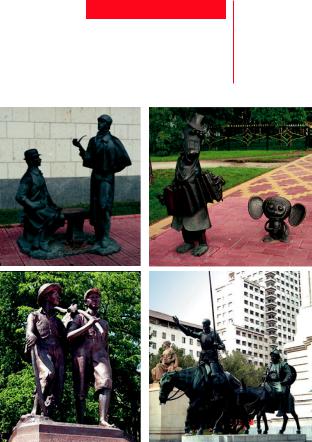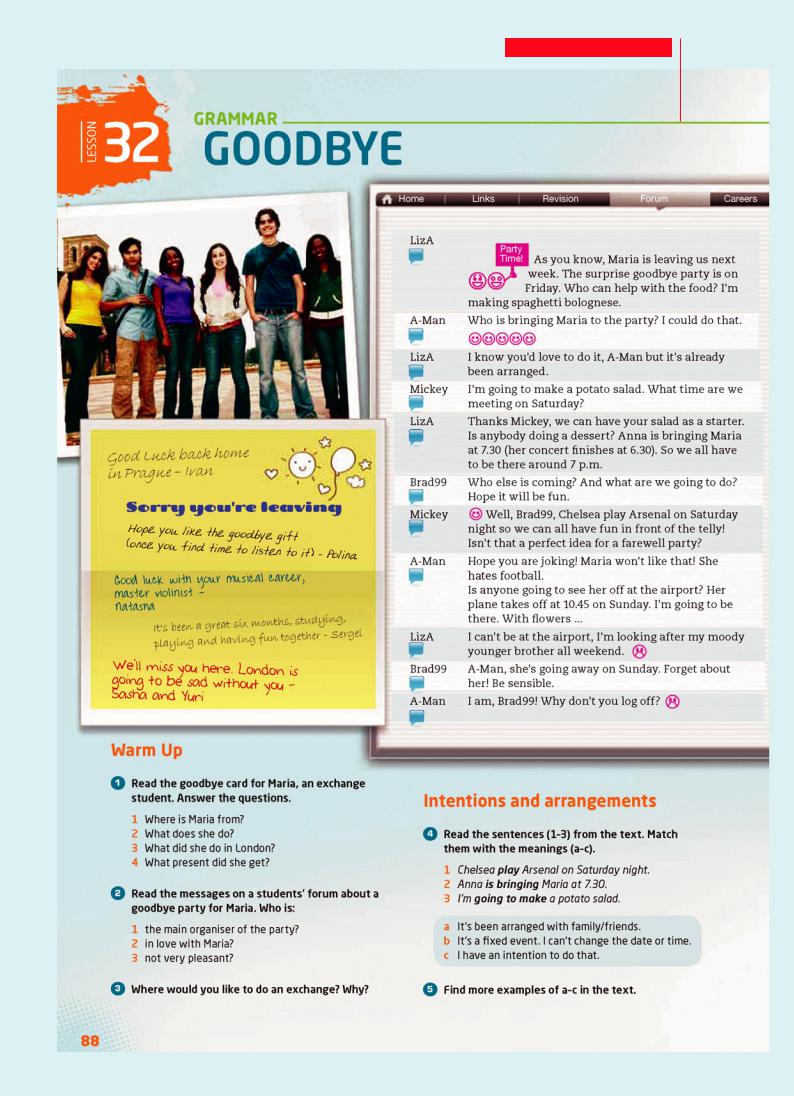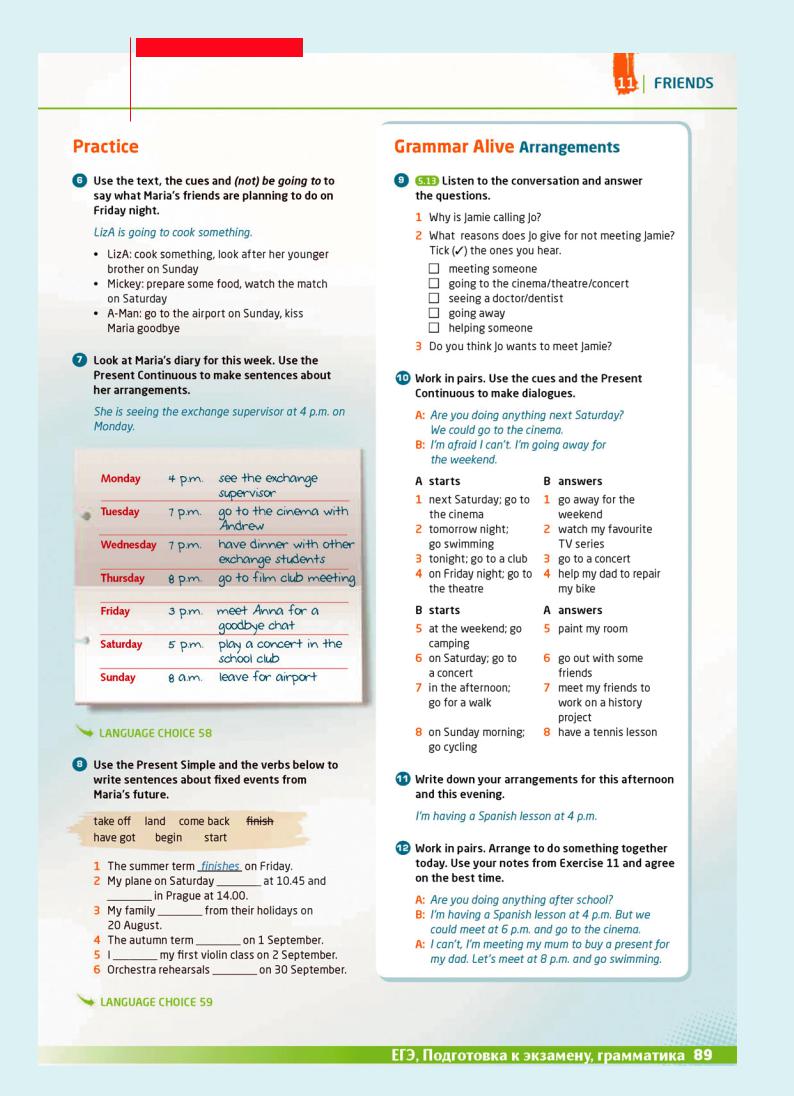
- •NEWS IN BRIEF
- •TEXTS FOR READING
- •Juvenile Delinquency
- •Numbats and Wandoo Trees
- •METHODS OF TEACHING
- •CLASSROOM ACTIVITIES
- •Good Friends Help You Live Longer
- •CREATIVE WRITING
- •Friendship
- •FOCUS ON LANGUAGE
- •Strange Friends
- •TEACHERS FORUM
- •LESSON PLANS
- •TOPICAL JOURNEY
- •Friendship Day
- •Importance of Friendship in Bible
- •Friendship Stories
- •Symbols of Friendship
- •Friendship Literature
- •Shakespeare Quotations on Friendship
- •Letter Writing
- •Idioms about friendship
- •Email Etiquette
- •FOCUS ON LITERATURE
- •SCHOOL THEATRE
- •Six Friends
- •Five-Minute Tests
- •YOUTH ENGLISH SECTION
- •Compliments

FRIENDSHIP
It is sometimes said that friendship needs no words. Yet the gift of friendship is well worth celebrating. It comes in many disguises and has many objects. It has been given its due in prose, poetry, songs and films. Let’s join those who sing its praises.
1. Similes
Ask your students to describe their best friend using similes, likening this person to the objects listed below and explaining the grounds for comparison.
He/she is like _______________ (natural phenomenon). He/she is like _______________ (plan/flower).
He/she is like _______________ (piece of furniture). He/she is like _______________ (item of clothing). He/she is like _______________ (food/drink). He/she is like _______________ (animal).
2. Friends Wanted
In the famous animation films made by Roman Kachanov (script by Eduard Uspensky), Gena the Crocodile and Cheburashka advertise for friends. Give your students the task to create a “Friends wanted” advert for themselves. Background: they are on a study-abroad semester and don’t know anyone yet, so they feel lonely and start looking for a friend.
3. Acknowledgement Speech
Students have a chance to honour their friends by talking about the difference they make. Appreciating friends is something we must always make time for. So make them write and deliver a recognition speech entitled “Who you are makes a difference” (explain how your friend makes a difference to your life).
4. Humans and Other Animals
The companionship that animals offer may be even deeper and more satisfying than human interaction. Sometimes people struggle to say the right thing and fail to do so when what we really need is to simply be there for each other. That’s what animals are so good at. Ask your students to describe their relationship with their pets. If they don’t have one, they can tell a story shown in some movie they have seen.
5. Literary Friends
There are numerous works of verbal art that celebrate friendship and countless pairs of friends and even trios that are universally known. Don Quixote and Sancho Panza; Sherlock Holmes and Dr. Watson; Huck Finn and Tom Sawyer; the Three Musketeers; Harry, Ron and Hermione – the list is endless. And I believe it is also true that many of us, while reading these great stories, have dreamt of becoming part of them. Now it’s time you wrote yourselves into your best-loved tale. Which character(s) would you like to make friends with? Whose place would you like to take? Or maybe you’ll be a completely new character, say, the fifth musketeer? Give free reign to your imagination!
CREATIVE WRITING English
9
February 2013
And here’s a poem of mine about the fine line that separates fiction from reality.
I hear a character speak
Imagine me, or I will not exist.
Your thoughts flesh out my body, give me weight. My voice inside your head – you choose the tone. Some final touches: I’m complete. But wait
And see me grow, well nurtured by your dreams Till I transcend the fiction and appear
More real than the dull familiar truth Of everyday existence. Have no fear.
I’ll guide you gently, teach you to escape Into my world, drawn on a larger scale,
Though with just two dimensions. Fill in the gaps And write yourself into your best loved tale. You’re in my story, former selves all shed. Suspended, waiting, dying to be read.
6. Me and I
This task owes its name to the famous song by ABBA. It could also be dubbed “Estrangement and Reconciliation” (The self has it out with the self). We are our own worst enemies, but also own best friends. Learning to love and cherish ourselves can be a life-long process. Imagine two sides of yourself as distinct characters, each with reasons to be angry at and to love or need the other part. You can have one side write a letter to the other and have the other answer. Move from resentment to appreciation. This is an exercise that lets you out of yourself and in again. It allows you to mythologize yourself a little, which is powerful and often healing, an exercise not just in writing but in knowing yourself a little better.
By Yulia Klimenova, MSU
Picture: euro-coins.ru; farm1.static.flickr.com; prousa.ru; mosprogulka.ru

English CLASSROOM ACTIVITIES
10 EXPLORE YOUR CHOICES
February 2013
To Teach, To Learn, To Win!
The growth in the use of English as the most important language for international communication has considerably influenced people’s attitude to the English language in general and its teaching and learning in particular. It goes without saying that English teachers are facing a new challenge today: they have to help their students to reach the highest level of proficiency. To achieve this target, teachers need appropriate language-learning materials and resources that can ensure such a level. From this perspective the importance of a good textbook, that often determines the main part of classroom teaching and the students’ out-of-class learning, can not be overestimated.
I would like to introduce you to a new English course called “CHOICES-Russian edition”, which motivates teenagers who need to achieve academic and educational goals in the modern world. It also gives teachers the power to adapt teaching resources to their classrooms.
CHOICES not only ensures a good knowledge of the language, but prepare learners for life in the 21st century. While working with CHOICES, students will develop such important skills as:
•information handling and critical thinking;
•interpersonal competence and skills of working together;
•autonomous learning and life-long learning skills;
•test taking skills.
Here you can see part of the unit from the Pre-Intermediate course book “CHOICES-Russian Edition” and lesson plan.
UNIT 11 FRIENDS
(“CHOICES Russian Edition” Pre-Intermediate )
The Lesson Plan
Topic: Goodbye
Objectives: read and talk about friends, exchange students Use Present Continuous and to be going to to express intentions and arrangements.
1. Greeting and introducing a topic
You can discuss with your students where they can make new friends.
2. Warm Up
Ask students to look at the photo on p.88 and discuss it. Encourage them to guess who is in the picture.
You can ask following questions:
Who are people on the picture? Are they related?
How are they related to each other? (What’s their relationship to each other?)
What do they do? What are they doing?
Why are they having their photo taken?
Write some of the ideas on the board.
Ex. 1 p. 88
Make sure that your students understand who an exchange student is.
An exchange student is usually a high school or university student, who spends several months studying abroad. As a rule they live with a host family. Though they are called exchange students, no swapping is required. The main idea behind this programme is for teenagers to experience living and studying in a different country and culture.
Tell students to look at the goodbye card on the right and answer the questions. Students check their answers in pairs.
Answers: 1. Novosibirsk; 2. studies, plays violin; 3. studied (she was a student); 4. something to listen to (probably a CD)
Ex. 2 p. 88
Students read the messages and answer the questions. When you discuss the answers get your students to read aloud sentences from the text, supporting their choice.
Answers: 1. LisA, 2. A-Man, 3. Brad99
Ex. 3 p. 88
Students could discuss this in pairs. After they have come to an agreement, ask a few to tell the class and find out the most popular destination.
3. Grammar. Intentions and Arrangements Ex. 4 p. 88
Go through the differences between the first and the second sentences.
Answers: 1. b, 2. a, 3. c
Ex. 5 p. 88
Ask students to find more examples in the text.
4. Practice Ex. 6 p. 89
Students have to look through the text again and say what Maria’s friends are planning to do on Friday night (They should use ‘to be going to’).
Ex. 7 p. 89
Ask your students to make sentences about Maria’s arrangements for this week using Present Continuous.
Ex. 8 p. 89
Students have to make sentences about fixed events using Present Simple.
5. Asessment of pupil’s performance and home assignment
Home assignment. Language choice 58, 59. (SB p. 136)
By Alla Nemykina, “Language-360”
See more on CD.

CLASSROOM ACTIVITIES English
11
February 2013

English CLASSROOM ACTIVITIES
12
February 2013
